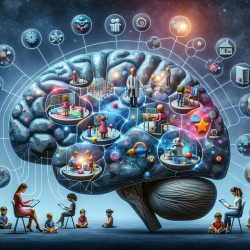Glioblastoma is one of the most aggressive forms of brain cancer, notorious for its rapid progression and resistance to conventional treatments. Recent research has uncovered a potential game-changer in the fight against this deadly disease: the chromodomain helicase DNA-binding protein 7 (CHD7). This protein plays a crucial role in regulating gene transcription and has been linked to increased cell motility and invasiveness in glioblastoma cells.
The Role of CHD7 in Glioblastoma
The study titled CHD7 promotes glioblastoma cell motility and invasiveness through transcriptional modulation of an invasion signature provides compelling evidence that CHD7 is up-regulated in human glioma tissues. Researchers demonstrated that knocking out CHD7 in LN-229 glioblastoma cells significantly suppresses their growth and invasion capabilities. Conversely, overexpression of CHD7 enhances these properties, indicating its pivotal role in tumor progression.
Implications for Practitioners
For practitioners working with glioblastoma patients, these findings offer a new avenue for therapeutic intervention. By targeting CHD7 expression or function, it may be possible to reduce tumor invasiveness and improve patient outcomes. Here are some practical steps practitioners can take:
- Stay Informed: Keep up-to-date with the latest research on CHD7 and its implications for glioblastoma treatment by attending conferences and webinars.
- Collaborate: Work with researchers to explore targeted therapies that inhibit CHD7 activity in glioblastoma cells.
- Advocate for Clinical Trials: Encourage participation in clinical trials that test new treatments targeting CHD7 pathways.
- Educate Patients: Inform patients about emerging therapies and the potential benefits of participating in research studies.
Encouraging Further Research
The study highlights the need for further investigation into the clinical-translational implications of CHD7 modulation. Researchers should explore how CHD7 interacts with other molecular pathways and identify potential biomarkers for predicting treatment response. Understanding these mechanisms could lead to more effective, personalized treatment strategies for glioblastoma patients.
The discovery of CHD7's role in glioblastoma is a promising step forward in cancer research. By leveraging these insights, practitioners can enhance their skills and contribute to the development of innovative therapies that may one day transform the standard of care for this challenging disease.
To read the original research paper, please follow this link: CHD7 promotes glioblastoma cell motility and invasiveness through transcriptional modulation of an invasion signature.










